Harnessing the Wind: How Cal Poly Sailing Finds Its Edge on the Water
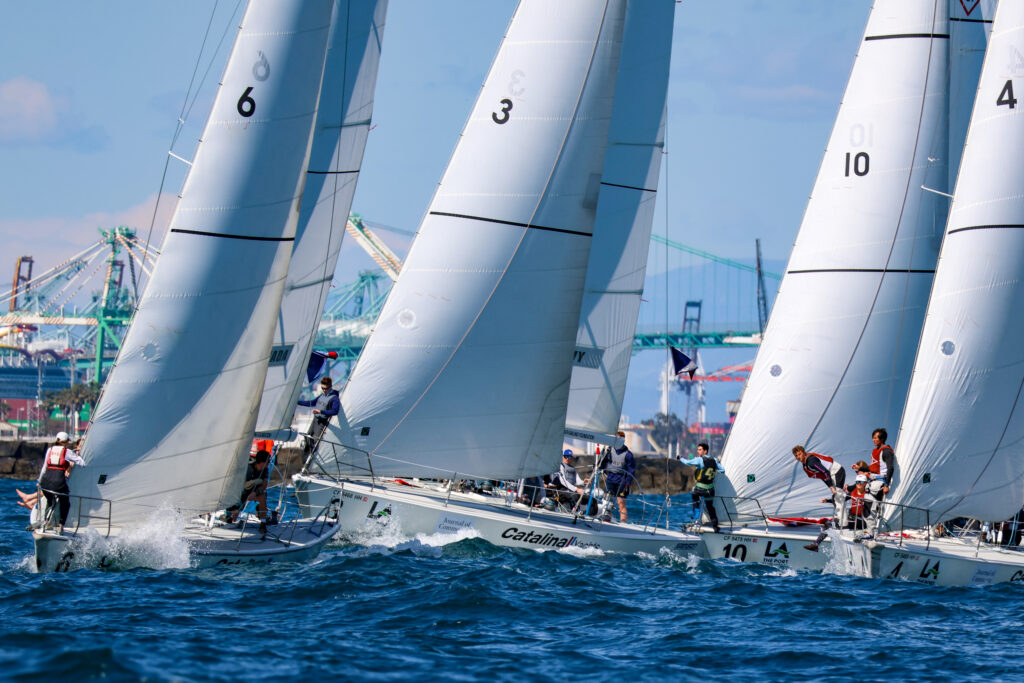
Harnessing the Wind: How Cal Poly Sailing Finds Its Edge on the Water By Emily Slater The salty breeze drifts as the 40-foot keelboat heels slightly, gliding across the calm waters off Morro Bay. Sunlight shimmers on the surface while a chorus of commands cuts through the air.
“Ready to tack?” calls Jack Kisling, an aerospace engineering senior and the club’s offshore sailing skipper.
“Copy!” comes the response, quick and sharp.
“3-2-1!” The crew adjusts the sail and braces for the turn, each movement deliberate, every shift a calculated effort to balance control and speed.
For Cal Poly’s Sailing Club, practice isn’t just about racing; it’s about awareness, adaptability and the coordination that turns a boat of individuals into a team.
That constant refinement is part of what draws so many engineers to the sport. Sailing is a test of physics and aerodynamics, where even the smallest change — a degree here, a shift in weight there — can mean the difference between winning and losing.
“A sail works like the wings of a plane,” Kisling said. “It’s all about lift, drag and control.” He studies the water ahead, reading wind patterns only experience can decode. Out here, physics isn’t confined to equations; it plays out in motion, with every gust and wave demanding a response.
Another call moves through the boat, relayed from sailor to sailor. Hands tighten on ropes, eyes flick between the sails, bodies shift to keep the boat steady. The timing isn’t always perfect — a slight hesitation, a movement too early or too late — but they adjust, reading the wind and the water with each pass.
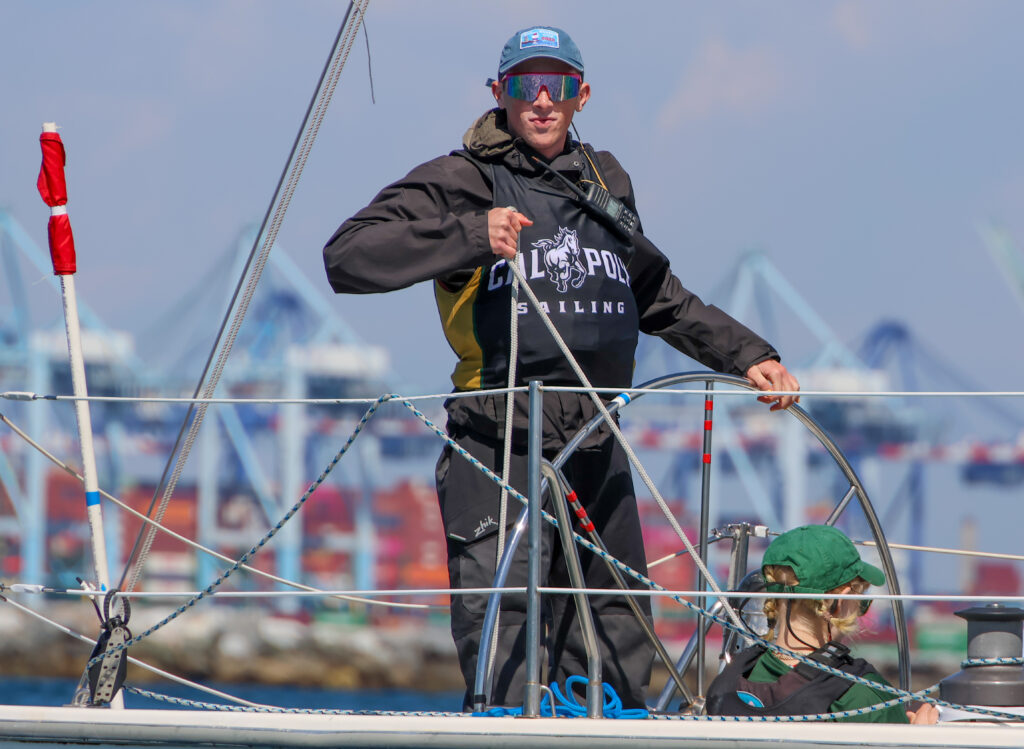
What starts as small corrections gradually becomes something more fluid. The boat reacts, the crew adapts, and bit by bit, they find their flow. Commands come quicker, timing sharpens and adjustments feel more natural. Trust builds with every maneuver. They come from different backgrounds, but on the water, those differences fade as they learn to move in sync.
The Competitive Edge
Cal Poly Sailing is more than a club — it’s a student-run team that holds its own against some of the best collegiate sailors in the country. As the largest team on the West Coast, they compete in the Pacific Coast Collegiate Sailing Conference and travel to more than 28 regattas a year, facing teams from San Diego to Hawaii, the Pacific Northwest and the East Coast.
Their home base is the Morro Bay Yacht Club, where they train and host the annual Mustang Open Regatta, sharpening their technique in the protected waters just 15 minutes from campus.
The team itself is as varied as the conditions they sail in. Their sailing experience ranges from lifelong racers to those who only took up the sport in college. Some, like Kisling, have been sailing since before they could walk. Others, like mechanical engineering senior Kyle Hirth, didn’t learn to sail until college, after rooming next to Kisling in the dorms.
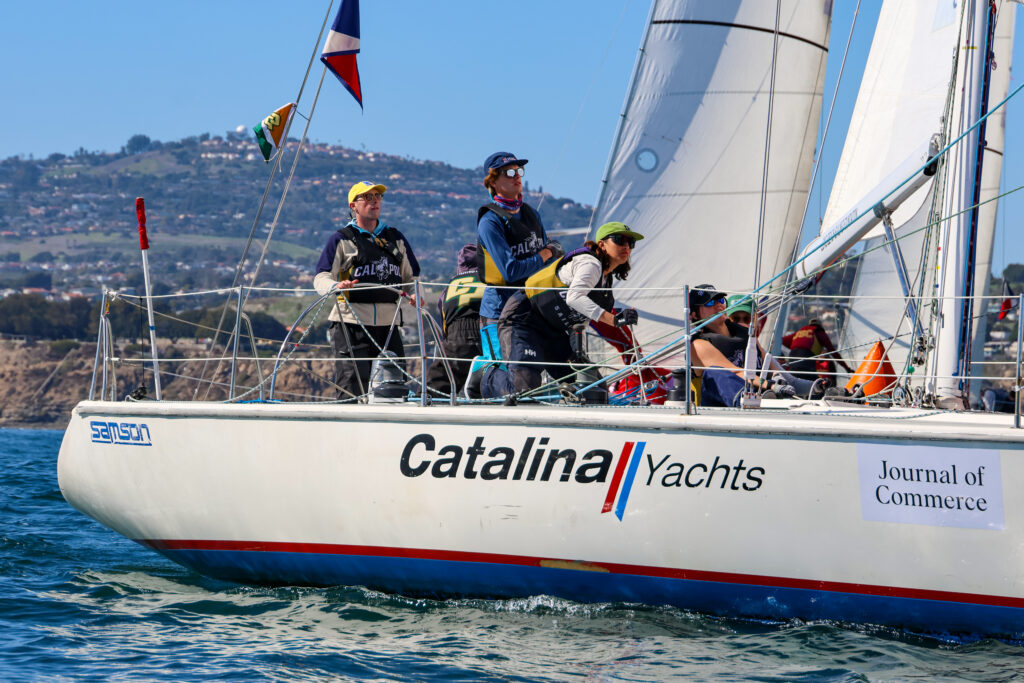
Of the eight-member crew competing in the Harbor Cup, five are engineering majors, while others study political science, plant sciences and graphic communication. Hosted by Cal Maritime Athletics and the Port of Los Angeles, the Harbor Cup is an invitation-only regatta where 10 teams from across the country race identical Catalina 37s, testing their skill in some of the most competitive waters on the West Coast.
With the Harbor Cup ahead, every practice run is a chance to refine their coordination. The boat is in constant motion, and so is the crew. Every maneuver depends on timing and clear communication.
“Everyone ready?” Kisling calls. “Turning the boat!”
The jib swings into position as the crew moves efficiently across the deck. Though the water is calm, they scan the surface for puffs — fleeting bursts of wind that can mean surging ahead or falling behind.
“Going for point!”
The boat angles closer to the wind, pushing forward without stalling. These moments — quick, precise and executed under pressure — separate a solid team from a winning one.
Strategy plays out in three core loops: bow, speed and tactics. The bow team manages adjustments at the front, the speed loop trims sails for maximum efficiency and the tactics loop, led by the skipper, positions the boat for the best course.
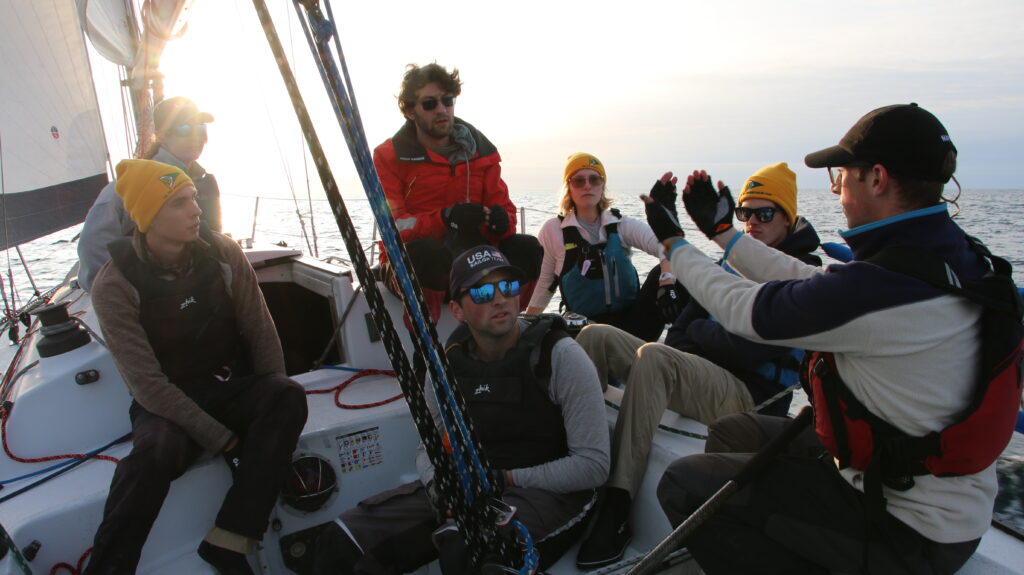
Gabe Gargiulo, an environmental engineering senior, was drawn to this constant interplay between strategy and execution.
“Sailing filled everything I wanted — adrenaline, excitement, tactical and strategic thinking. You make so many adjustments, and if you put in the work, it pays off.”
That work depends on trust. On a big boat, voices don’t always carry over the wind and waves, so every command must be relayed seamlessly.
“It’s all about teamwork and communication,” Kisling said. “You have to trust that the message will get where it needs to go.”
More Than a Sport
As practice winds down, the sun drapes Morro Bay in gold, its reflection flickering on the calm water. The intensity of racing has faded, replaced by quiet conversation as the team replays a tough maneuver, dissecting what went wrong and what they’ll adjust next time. These post-practice discussions — part debrief, part problem-solving — are where progress happens.
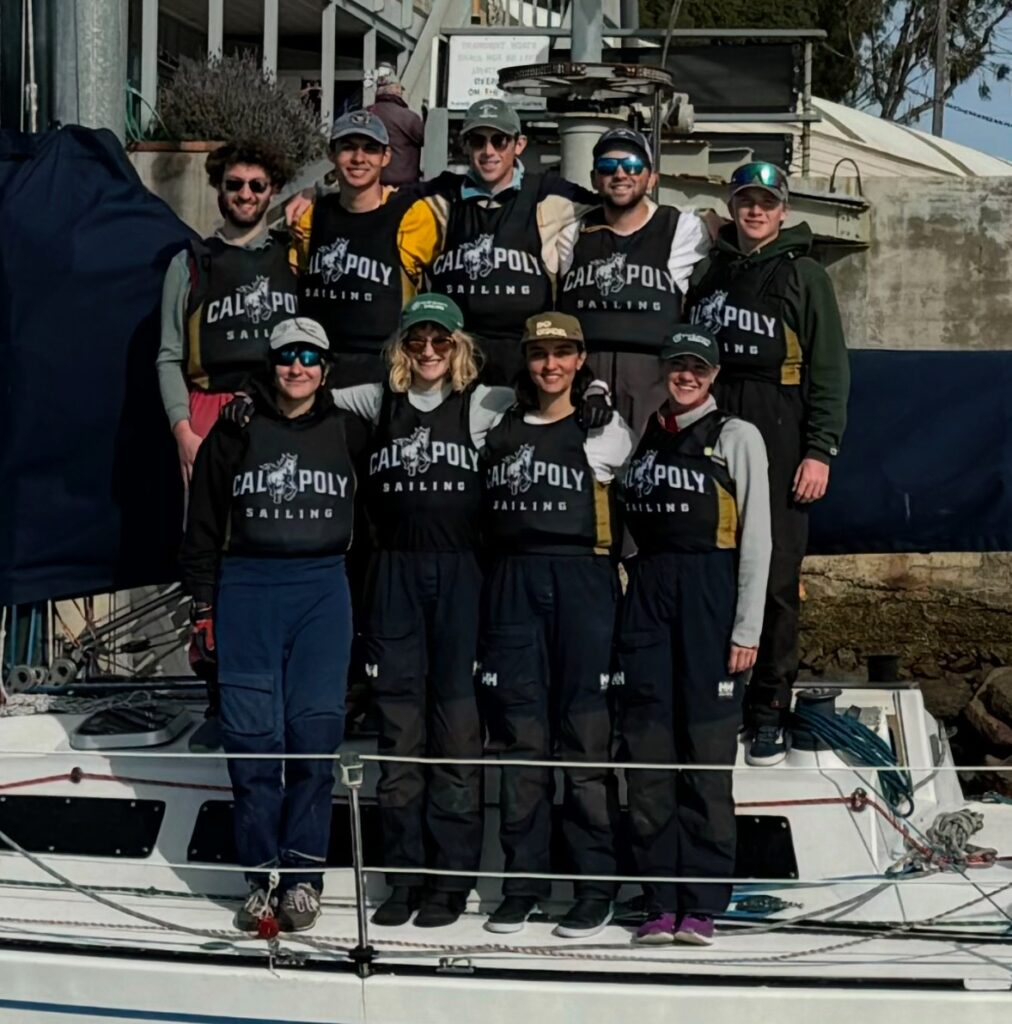
For Kisling, sailing is more than competition. It’s something deeper.
“I love it because it connects you to nature. It’s so human. And it’s social,” he said. “I get to sail with my friends, who all love it so much.”
That bond is clear as they motor back into the harbor, the boat cutting smoothly through the evening stillness. Then, from the speakers, a familiar beat kicks in — Britney Spears’ “Oops!… I Did It Again.”
Ximena Greatorex, an aerospace engineering senior, grins.
“If there’s one thing that defines our team,” she said, “it’s that we know how to have fun even when the pressure is on.”
For all their training, strategy and physics behind the sport, there’s something unquantifiable about sailing — the moments that don’t show up on a leaderboard but define what it means to be part of a crew. The long hours on the water. The relentless problem-solving. The trust in the people around you.
And sometimes, just laughing and singing together as the harbor lights come into view.
Call to Action: Join the Crew!
Cal Poly’s Sailing Club is more than competition — it’s teamwork, strategy and the thrill of harnessing the wind. As a student-run team facing top programs nationwide, the club provides experience in leadership, problem-solving and engineering in motion. Support the team or learn how to get involved today. Visit www.calpolysailing.com.
